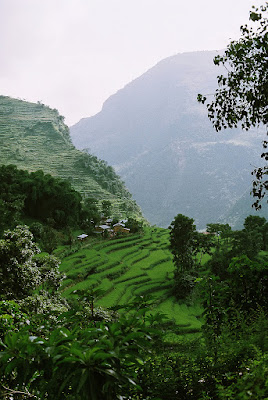Role of Farming
Most people in Nepal depend on farming for living. Almost all people of rural Nepal (99%) who live in the village are farmers. But farming is the most important part of the lives of Nepalese people. The farmlands owned by most farmers are small subsistence farmers and they grow just enough food for living. Most farmers do not have extra production of food for selling in the market. Often the farm income is not enough for survival and men go overseas as laborers to earn some money to supplement their farm income.
Farming Tools
Farmers of Nepal use simple tools like plows, spades, sickles, hammers, axes, and chisels for farming. Oxen are used to plow the field. Their farming tools include. They don’t use any machinery tools. They do all the works by hand and carry the farm loads on their back.
Fertilizer
Traditionally, farmers in Nepal didn’t use chemical fertilizers in the field to grow crops but it is becoming increasingly popular in recent times. However, cattle manure, discard-fodder and leaves are decomposed in manure pits to make organic fertilizer. This type of fertilizer is still the main source of micro nutrients for the crop in Nepal. When leaves and other plant litters are mixed with cattle dung and urine, potent compost is formed by the process of decomposition. Compost is the primary fertilizer for the crops.
Farmland
Majority of Nepalese people live in the mountains where the land is very steep. Because it rains a lot in Nepal, precious soil of the farmland can be easily washed out, when the land is not covered with vegetation. The slopes of the hills are converted to terraces on the slopes to keep the soil from washing away. Every family in the village owns a couple of acres of terraced land. The main crops they grow are potato, corn, millet, barley, beans and buckwheat.
Mixed Farming
Nepalese farmers practice a mixed cropping system. For example, they also plant beans, pumpkins and pulse crops mixed with the corn. Soybeans are planted on the edges of terraces of rice paddies. Potatoes are also mixed with corn. Cucumbers and other vegetables are also mixed with each other. Millet seedlings are often planted in the corn field after the tassels come up in the corn plant. Once the ears of corn of the corn are picked up by hand, they cut the corn stalks and stack them on tree branches for feeding cattle in the winter.
They plant radishes, turnips, mustard and peas in the barley field. Once the radishes and turnips are ready, they take them out. They cut the radishes and turnips in small pieces and dry them and save for later use.


No comments:
Post a Comment